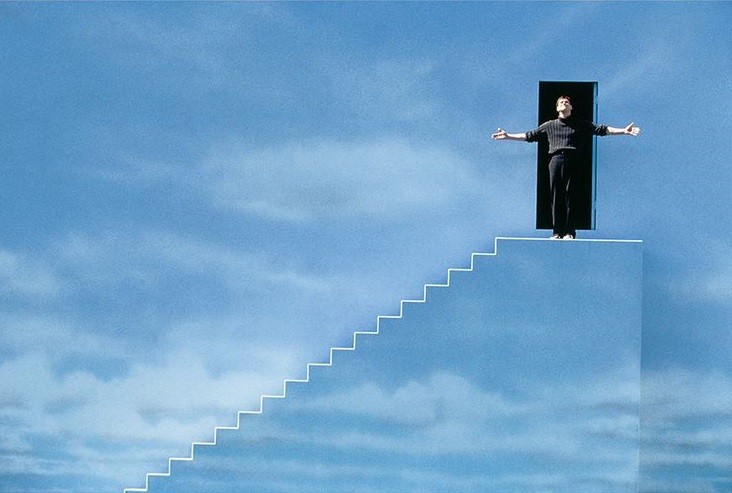Thinking Outside the Box to Make Better Client Connections
We see the world in dimensions. Imagine living in a box defined by our perspective and experience. You cannot see the boundaries. But, the height, width and depth of the box shape how you see the world. Think “The Truman Show”.
I’m in one. You’re in one and so are your clients.

There are fundamental biological and evolutionary reasons for this.
Let’s put it in a digital context: Taking a photo may use six megabytes of data. Shoot a video for 10 minutes and you’ll need to process a gigabyte of data.
If we were to process everything around us at any given moment (and add to this the layers of meaning we bring to the world), we would need enormous amounts of mental processing power. And, that takes energy.
So we tend to pay attention to what matters. If we don’t, it can feel like our heads will explode. What we focus on is shaped by what we consider important based on perceived incentives and rewards. And, not to complicate things too much – these are based on both evolutionary drivers and our past experiences.
Focus not only helps us avoid cranial overload, it is also necessary for survival. As I wrote in “Tunnels & Funnels: Why We Make Bad Decisions & How We Can Make Better Ones,” if you are hunting for a buffalo, staying focused on your prey rather than looking up to admire the sky is the best way to ensure you will get to eat.
Why does this matter? Here are three examples of dimensional thinking where the experience and perspective that the individual brings to the table shapes their solution:
- A CEO with a sales background sees the solution to business growth in terms of hiring more sales people.
- A white marketing professional thinks about hiring diverse agencies only when they need to reach an African American or Hispanic audience.
- A public relations professional sees PR as the solution to every client or prospective clients’ marketing challenge.
For the communicator dealing with our CEO or the diverse agency looking to be hired by our marketer, the different dimensions through which we see the world create dissonance in communications.
We’ve all, for example, had the experience of trying to engage with someone who just doesn’t seem to get what we’re saying or just doesn’t want to listen to our advice. At these moments, we may throw up our hands when we cannot convince others of our point of view.
When we think about these interactions in the context of how others perceive the world, there’s an opportunity to step back and find a different path to engagement.
The simple wisdom at this point would be to focus on the importance of listening. And, while this is a requirement… if my worldview is I’m a hammer and all I see are nails, we’re still not going to connect.
The logical next step is to seek to better understand the person with whom you’re interacting. But, if the PR professional is, for example, still operating in their dimension – where PR is the solution to every problem – they’re unlikely to communicate effectively with the CEO who sees sales as the solution.
Yes, we need to listen and understand a client’s perspective. But, there’s an additional step required to find common ground that leads to successful relationships: Know yourself. If you recognize you are seeing the world through the eyes of a hammer, you may be able to do something about it.
Companies or consultants able to move beyond this type of thinking aren’t common – in part, because businesses are structured around dimensional approaches. Think sales force, rather than solutions teams.
The ability to think outside the box makes it more likely to find paths to connection.
Having a diversity of experience, wearing multiple hats, and empathy – or at least an interest in someone else – makes it easier to understand and move beyond the boundaries of our thinking.

At a recent CEO networking event with the Vistage Group, the concept of Blue Ocean Strategy developed by W. Chan Kim and Renée Mauborgne, professors at INSEAD, was discussed. The idea is that companies can succeed by creating "blue oceans" of uncontested market space by thinking beyond boundaries.
If we create our own “blue ocean” spaces, I believe we are more likely to find personal success.
This isn’t easy. When we think outside the box, we need to recognize that those we engage with are likely to remain firmly in their box. But, understanding them and their dimensions provides unique opportunities to connect in ways that are far more likely to resonate.
Find more articles and videos on the Insights Blog, including: “To Find Diverse Agencies & Professionals: We Need to Look Beyond Who We Know...” and “Communications Best Practices: Scarcity, Tunnels & Funnels”.
Simon Erskine Locke, Founder & CEO of CommunicationsMatchTM
Locke writes extensively on issues communications, PR, media, and their intersection with behavior.
Prior to founding CommunicationsMatch, he held senior corporate communications roles at Prudential Financial, Morgan Stanley, and Deutsche Bank and founded communications consultancies.
CommunicationsMatch offers communications & PR agency search tools and resources that help companies find, shortlist and engage communications agencies, consultants and freelancers by industry and communications expertise, location, and size. The site has 5,000 agency and professional profiles in areas including: crisis communications, public relations, internal communications, government affairs, investor relations, content marketing, social media, SEO, website development, photography, and video.
